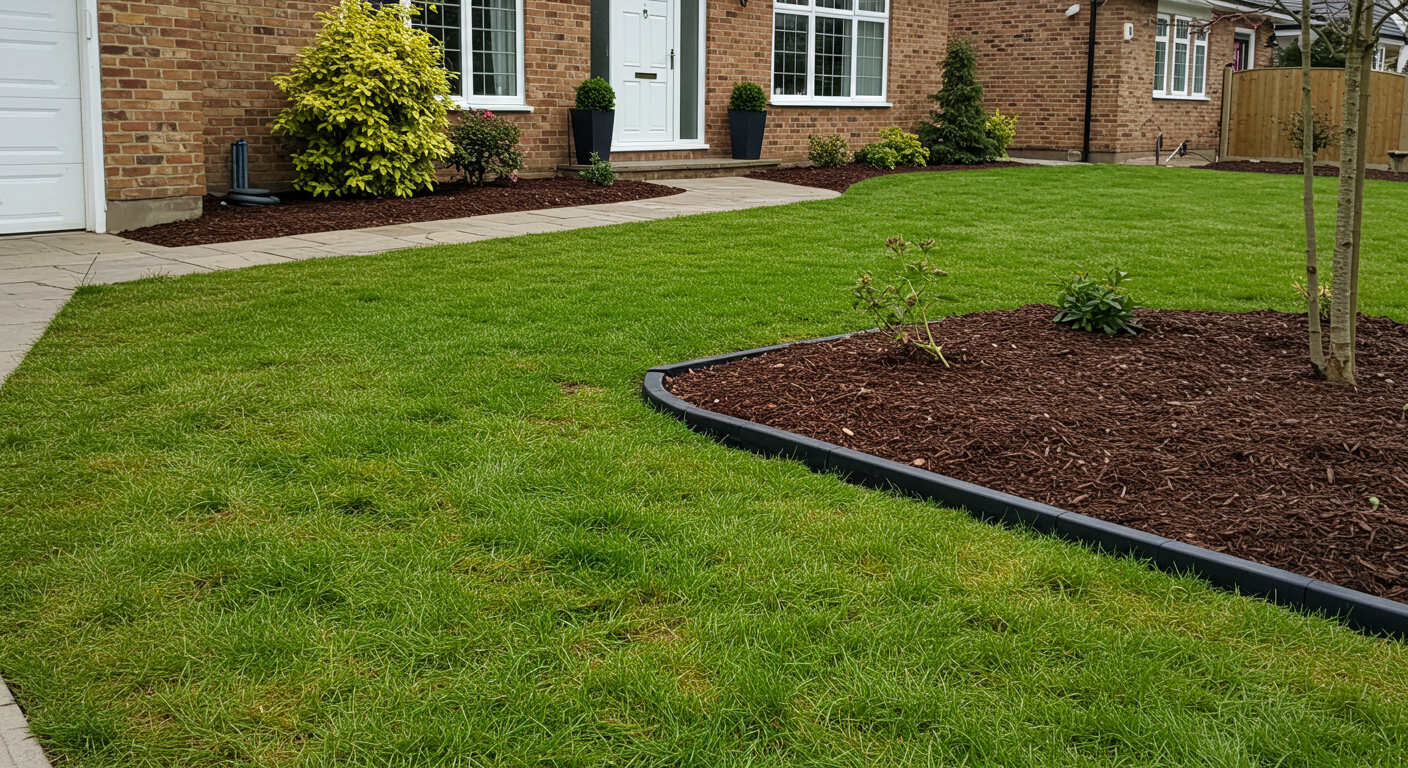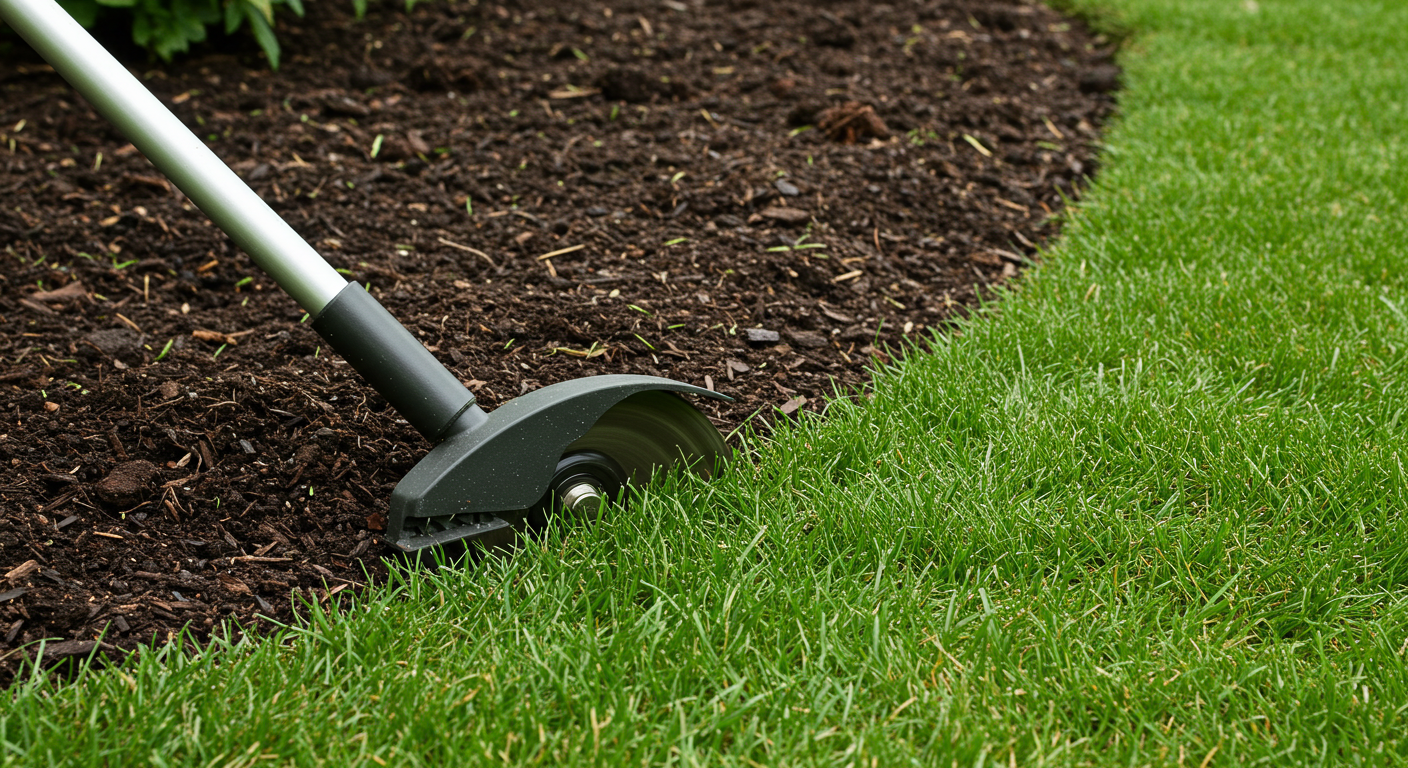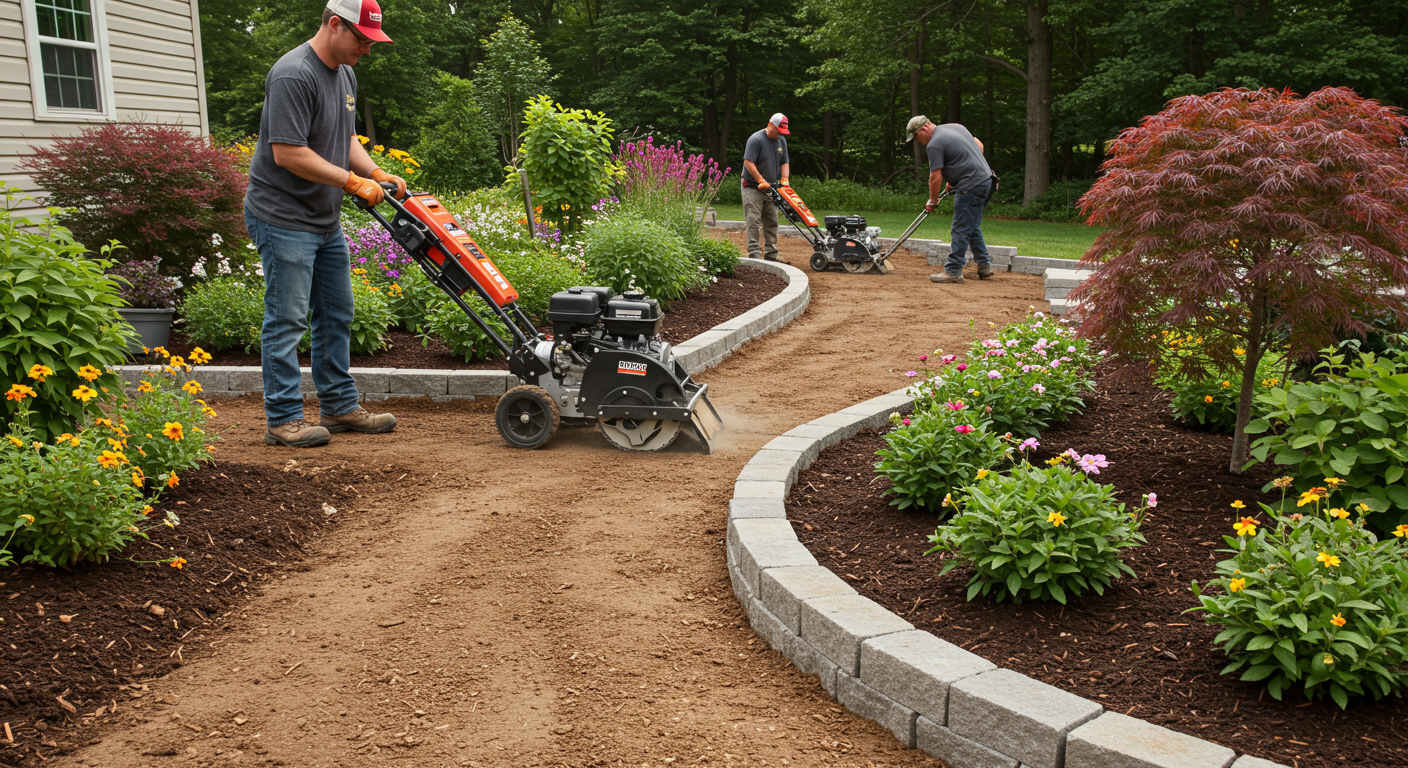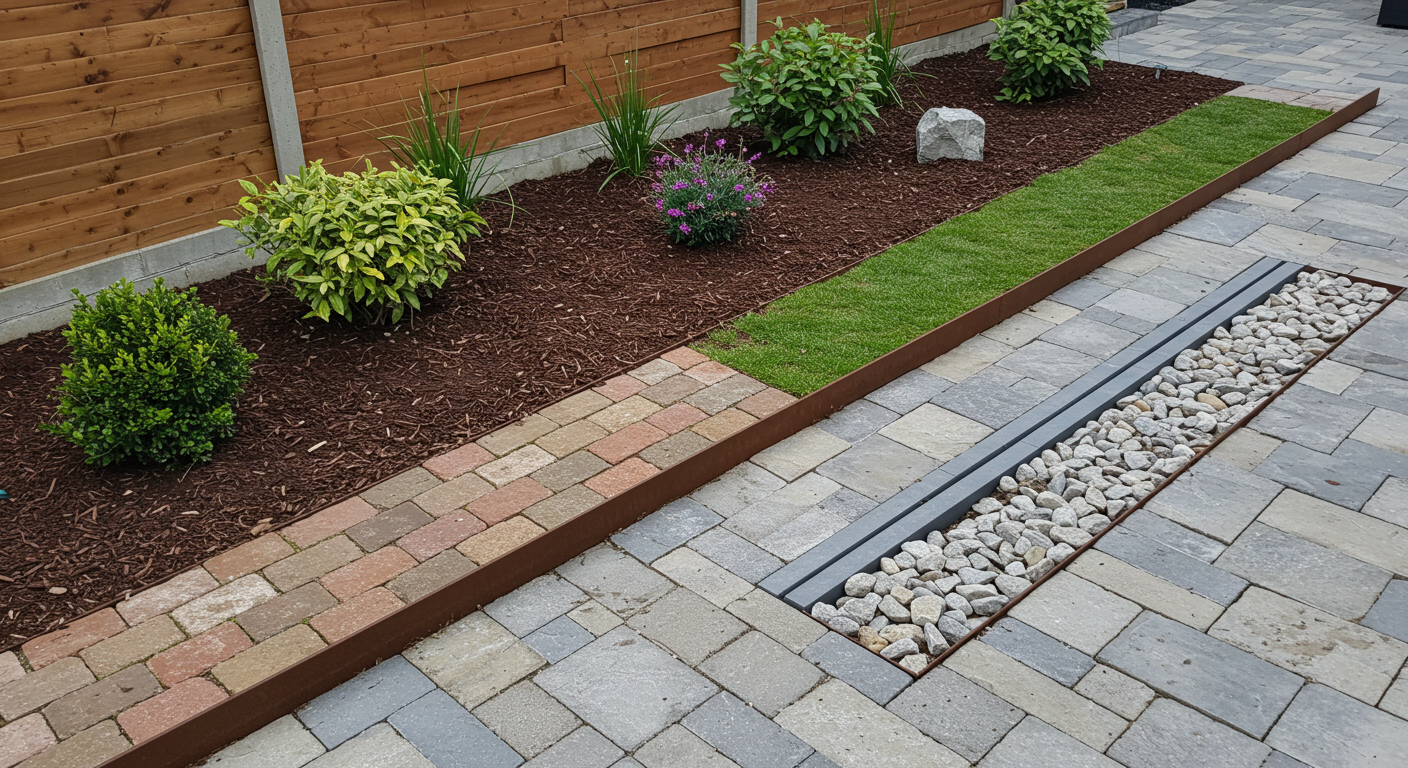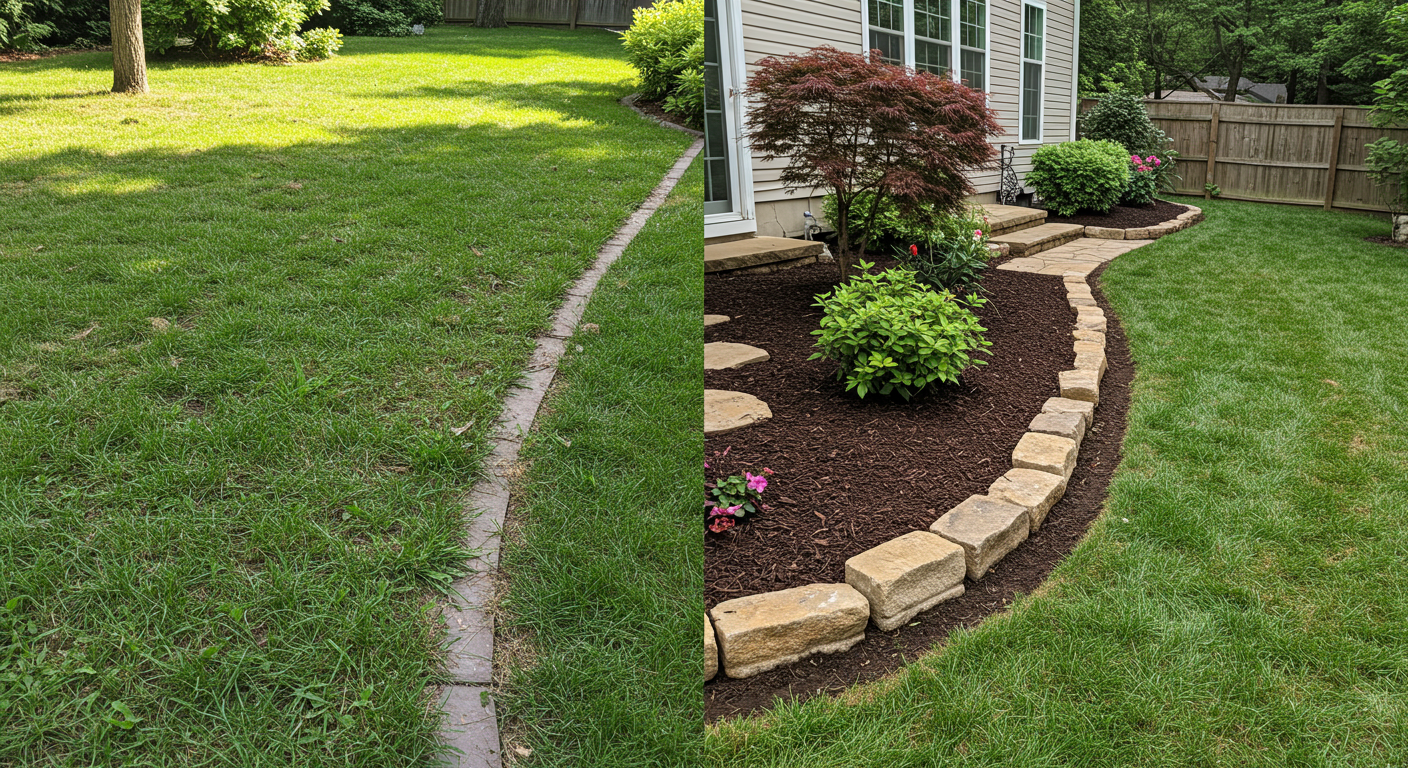Your home’s landscape is more than just grass and plants—it’s the first impression visitors get before they even step inside. Even if you have lush green turf and colorful flower beds, your yard can still look untidy without crisp, well-defined edges.
Edging is the landscaping equivalent of trimming the frame of a painting. It provides clarity, structure, and polish, transforming an ordinary lawn into a showcase. A crisp edging transformation does more than create beauty—it improves maintenance, property value, and even environmental health by keeping grass, weeds, and mulch in their rightful places.
In this in-depth guide, we’ll explore everything you need to know: the science and art of edging, step-by-step DIY techniques, professional approaches, design styles, maintenance hacks, and pro tips from landscaping experts.

What Is Crisp Lawn Edging?
At its core, crisp lawn edging is the process of cutting sharp, distinct boundaries between different elements of your landscape—usually between the lawn and flower beds, walkways, patios, or driveways.
There are three main types of edging:
- Natural Edge: A cut trench in the soil for a clean, organic look.
- Physical Barrier: Using stone, metal, brick, or plastic edging materials.
- Raised or Decorative Edge: Incorporating borders as a design element.
The “crisp” part refers to keeping these edges sharp, straight, and consistent over time.
Benefits of Crisp Edging Transformation
A professional-looking edge offers multiple advantages:
- Curb Appeal Boost – Instantly makes the lawn look cleaner and more luxurious.
- Increased Property Value – According to the National Association of Realtors, landscaping upgrades (including edging) can add up to 15% to property value.
- Weed & Grass Control – Prevents invasive grass from creeping into flower beds.
- Reduced Maintenance – Provides a natural mowing guide, saving time and effort.
- Design Flexibility – Lets you play with curves, geometric lines, and creative garden shapes.
👉 Looking for professional help? Green to Gorgeous offers complete lawn and landscaping services tailored to homeowners who want premium curb appeal.
Planning Your Edging Project
Before grabbing a shovel, planning is key. Ask yourself:
- Where do you need definition? Around garden beds, trees, pathways, or patios?
- What style fits your home? Straight, formal lines for modern homes or curved edges for natural gardens?
- What’s your maintenance tolerance? Some edging materials require regular upkeep.
- What’s your budget? Costs can range from free (DIY shovel edging) to thousands (stonework or steel installations).

Tools and Materials You’ll Need
Having the right tools determines how professional your edging will look.
Manual Tools
- Half-moon edger
- Garden spade/shovel
- Rake
- String line or garden hose (for outlining curves)
Power Tools
- String trimmer
- Lawn edger machine
- Sod cutter (for larger projects)
Edging Materials (optional)
- Stone, brick, or concrete pavers
- Metal edging strips (steel or aluminum)
- Plastic edging rolls
- Wood (landscape timbers or railroad ties)
💡 Pro Tip: Always sharpen manual edging tools before starting—dull blades tear soil instead of slicing it cleanly.

Step-by-Step: How to Do a Crisp Edging Transformation
Step 1: Outline Your Design
- Use spray paint, rope, or a garden hose to mark your desired edge.
- For curves, avoid sharp angles—smooth flowing lines look natural.
Step 2: Cut the Edge
- Insert the edging tool into the soil 2–3 inches deep.
- Lean the tool back slightly to create a sloped trench.
Step 3: Remove Excess Turf and Soil
- Pull out grass, weeds, and debris.
- Use a rake to smooth the trench.
Step 4: Install Edging Materials (Optional)
- If adding stone, metal, or plastic, place them into the trench.
- Ensure consistency in height and spacing.
Step 5: Clean and Define
- Backfill soil tightly against edging material.
- Add mulch or decorative gravel for contrast.
Step 6: Maintain Regularly
- Run the edger once every 4–6 weeks.
- Refresh mulch annually.

Popular Edging Styles & Design Inspiration
Crisp edging isn’t just functional—it’s also a design choice. Here are styles to inspire your yard:
Classic Straight Line Edging
- Works for modern, minimalist homes.
- Perfect for driveways and sidewalks.
Curved Garden Bed Edging
- Ideal for cottage gardens or landscapes with organic flow.
- Stone or Brick Borders
- Durable and timeless. Adds a premium feel.
Metal Edging
- Thin, subtle, and long-lasting. Best for contemporary gardens.
- Raised Wooden Borders
- Rustic look, perfect for vegetable gardens.
Common Mistakes to Avoid
- Edging Too Deep: Weakens the soil structure. Stay within 2–3 inches.
- Uneven Spacing: Leads to wavy, unprofessional lines.
- Neglecting Maintenance: Crisp edges blur if not refreshed monthly.
- Using Wrong Tools: A shovel alone won’t give clean, sharp lines.
Maintenance Tips for Long-Lasting Crisp Edges
- Edge once per growing month (April–October in most climates).
- Refresh mulch yearly to keep borders defined.
- Reseed grass near edges to prevent bald patches.
- Use a leaf blower to keep debris from softening edges.
DIY vs. Professional Edging: Which Should You Choose?
DIY Pros
- Cost-effective
- Flexible and creative
- Good for small lawns
DIY Cons
- Labor-intensive
- Can look uneven without skill
Professional Pros
- Precision and durability
- Advanced equipment (gas-powered edgers, sod cutters)
- Saves time and effort
Professional Cons
👉 For homeowners who want long-lasting, flawless results, hiring a landscaping company like Green to Gorgeous ensures the edging is not only beautiful but also durable.
FAQs About Crisp Edging
Q1. How often should I edge my lawn?
Every 4–6 weeks during the growing season.
Q2. What’s the best material for permanent edging?
Stone or steel for durability; plastic for budget-friendly projects.
Q3. Can I edge a lawn without special tools?
Yes, a flat spade works—but results won’t be as sharp as a half-moon edger.
Q4. Does edging really increase property value?
Yes. Defined landscaping significantly improves curb appeal, which influences home valuations.
Conclusion: Transform Your Yard with Crisp Edging
A crisp edging transformation is the landscaping secret that turns a good yard into a stunning one. It’s cost-effective, impactful, and achievable whether you DIY or hire professionals. By defining borders, improving curb appeal, and simplifying maintenance, crisp edging creates a yard that’s not just attractive—but memorable.
👉 Ready for a lawn transformation that truly impresses? Request a free landscaping estimate with Green to Gorgeous today.
